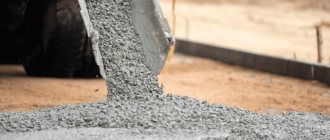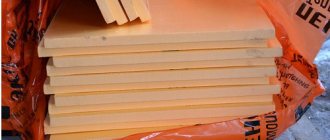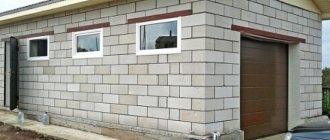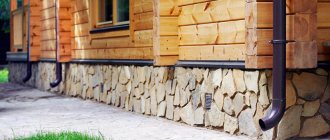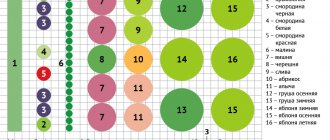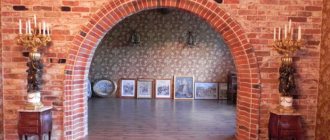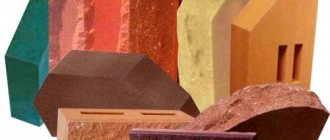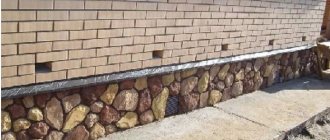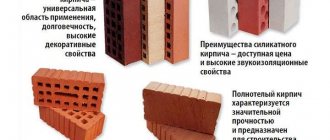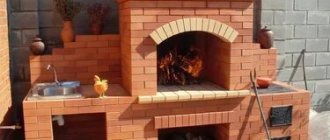A heat-resistant block is used for laying stoves and lining stove fireboxes. You can make your own mortar for fireclay bricks. Since such material is resistant to large temperature changes (up to 1500 degrees during combustion), alkali and all kinds of acids, a fireclay brick stove is considered the most reliable. The fireclay block weighs about 3 kg and has dimensions of 250x120x65 mm.
Heat-resistant brick for the stove: which one is better to choose
The choice of brick for constructing a stove should be special, since not only the integrity of the future structure, but also the safety of the home depends on it. In the modern world, electric or gas stoves, central heating, and radiators are used to heat the house. But there are people who prefer a stove with real, live fire to all these devices. Moreover, many lay out the stoves with their own hands. In this case, it is necessary to choose the right material so that the fireplace works for a long time and with high quality.
Height adjustment
To adjust the height of the heating device, special bolts are used, which are installed on its legs, or using supports. To set the required distance from the bottom of the firebox of a brick structure to the floor, lay several rows of bricks. Basic requirements before placing the combustion chamber in height:
you need to ensure a distance to the floor of 300-400 mm; if there is a niche for firewood under the firebox, this distance may be greater; When calculating the placement of the bottom of the combustion chamber, please note that you need to take into account the structure of the floor with all its components. Think about this when planning your heating system.
Fireplace size calculation
Fireplace size calculation
Types of bricks
Manufacturers produce different types of bars, which are made from clay, water, additives and other additives, and then dried and fired, giving them strength.
But there are several types of rectangles that do not require clay to produce. This is hyper-pressed and silicate brick. Materials used in construction have different purposes. Some bars are used for laying walls and partitions and are called masonry bars, while others are used to decorate the outer walls of a house. These products are called facing.
Ceramic rectangles and building bricks that do not contain clay can have a smooth, rough, or corrugated surface. Thanks to special additives, they can be given not only different colors, but also unusual patterns and designs. Common types of bars used in the construction and decoration of walls are:
- silicate;
- fireclay;
- hyper-pressed;
- ceramic;
- clinker;
- facing.
Each of them has its own set of characteristics, and also has advantages and disadvantages.
Sand-lime brick
This brick is considered the most affordable in price, because it does not require firing. The main component for its production is quartz sand (93%), the remaining 7% is lime. The material acquires density as a result of a chemical reaction in which lime is slaked. If nothing else is added to the mass, the product is white. Sand-lime brick is made in an autoclave, where the material is steamed at high temperature (200°C).
White bars are intended for both cladding and wall laying. But if you are going to use them to build housing, it is worth considering that they have high thermal conductivity. Since the product is resistant to temperatures above 200°C, stoves are not used from this brick. Silicate rectangles are not recommended for use in the construction of a basement floor, as they interact with groundwater and sulfur salts dissolved in them, which can lead to deterioration of the material.
White bars are well suited for building interior walls of a home. If you don’t know which brick is best to buy for cladding a house, take a closer look at the silicate product. It has high strength and density. To give the walls of your house an unusual look, you should choose a facing rectangle not with a smooth surface, but with an uneven or torn surface. This rusticated material, similar to wild stone, does not require additional plastering of the wall. They can decorate door and window openings.
Ceramic Hollow Red Brick
Hollow brick made of baked clay is cheaper than solid brick, because its production requires less material. Each block has holes and cavities. In construction, the advantage of such products is a lower load on the foundation of the house, low thermal conductivity and sound insulation, therefore they are often used as masonry elements of building walls.
If sawdust is added to hollow ceramic bricks during production, then when they burn during firing, they will leave behind small voids - pores. One bar of such porous material costs more than a hollow product, but is larger in size. Thus, a cubic meter of it can be purchased for the same price as a cubic meter of hollow rectangles. Porous bricks have better thermal conductivity than bricks with cavities. And thanks to their large sizes, they are convenient to lay out and can be quickly erected at home, saving on mortar.
Hyperpressed brick
This material is used in construction in the construction of foundations and basements, walls and fences. But more often it can be seen on the cladding of facades, columns, window and door openings. It is the most durable type of brick, because it is resistant to high and low temperatures and precipitation. No cracks form on it, and it will serve not only its owners, but also their distant descendants. You can build a house from hyper-pressed timber at any time of the year. The smooth surface of the product ensures high adhesion strength to the mortar and speeds up the masonry process.
Hyperpressed bricks consist of 86-92% crushed stone, limestone, marble, dolomite, facing stone waste or blast furnace slag. These durable products contain the best cement and coloring pigments. The formation of rectangles occurs under high pressure. As a result of hyper-pressing, all elements of the block are closely interlocked with each other, so the artificial brick acquires the moisture resistance, strength and frost resistance of the natural material (stone). This block has only two drawbacks: a large load on the support (foundation) and a high price.
Clinker brick
When producing clinker bars, refractory clay is fired at temperatures above 1000°C. As a result of this process, the brick is sintered and there are no voids left in it. The resulting monolith is highly durable and does not allow water to pass through. Due to its frost resistance, it can be used in the northern regions of the country.
The color palette of the material is all shades of yellow, red and brown. The surface of this type of brick is not only matte or smooth, but also glazed, and the shape is varied. Excellent external characteristics make it possible to widely use clinker products in cladding the facades of houses, and to construct chimneys, columns, and fences from them. Decorative walls are built from bars indoors; you can often see clinker bricks used as cladding for fireplaces and stoves.
Second calculation method
Laying of the furnace of an improved (with a stove in a hearth) Russian stove: a - general view of the stove; b - 1st row, c - 2nd row; d - 7th row; 1, 3 — pads; 2—1st row of main chimney; 4—stove ash pan; 5—stops.
Calculation of building materials for masonry can be carried out in another way. This is done if there is no calculation, but you need to do it yourself. If you have order, it is not difficult to do.
It should be noted that this method of calculation is also relative. The amount of building material that is in the first row must be multiplied by the number of rows, and the result obtained must be multiplied by the fill factor. If we are talking about standard heating stoves, then this coefficient is 0.8, and for stoves with a heating shield this figure is 0.65. During all calculation work, it is necessary to take into account the fact that at least 10-15% of bricks must be rejected.
Then you need to measure the height of the chimney and then calculate the amount of material depending on the cross-section of the chimney:
- for a quadruple pipe you will need 56 pcs. per linear m;
- for “five” you need to use 70 units;
- for the “six” you will need 64 bricks.
First you need to calculate the quantity, if the heating structure has dimensions of 90 by 90 cm, then this is 3.5 by 35 bricks. Now you need to count the number of bricks in the first row, then multiply by 30 rows in the oven, and then by a factor of 0.65. It turns out the following: 24.5 is multiplied by 30, and then the resulting result is multiplied by 0.65, for a total of 477.75.
We accept 480 pcs., with a pipe height of 4 m, the pipe in a “quadruple” is obtained:
4 multiplied by 56 and you get 224. For cutting and fluffing you will need another 56. Now you can calculate everything: 480 + 224 + 56 = 760. At the same time, do not forget that there is a defect, taking this into account you will need 836. We must also remember about lining with refractory material, one rib will take another 25.
As for clay, about 30 kg of it is consumed for every hundred. It turns out: 30 multiplied by 8.36, resulting in 250.8 pieces, that is, 250 kg of clay.
Friends of fire
The project was carried out by stove makers A. Batsulin and Marcus Flynn/Pyromasse. When building a masonry brick oven, the master must properly organize a labyrinth for flue gases to ensure the optimal level of heating of the structure’s body.
© The project was carried out by stove makers A. Batsulin and Marcus Flynn/Pyromasse. . It is also necessary to increase the efficiency of heat recovery, minimizing its loss through the chimney
© Lisac's Fireplaces & Stoves In addition to utilitarian properties, heat-intensive finishing materials have aesthetic qualities that harmoniously combine with any style
Lining the firebox with chamotte protects it from high temperatures
Refractory bricks are used at temperatures of 1200°C and above, which ordinary bricks cannot withstand (in such conditions they crumble). In addition, refractory brick accumulates and releases heat well, which is very important for the material used to make the hearth.
Fireclay brick, marked with the letter “Ш”, contains fireclay powder and also belongs to fire-resistant materials. It is used, as a rule, in places of direct contact with fire. It responds well to sudden temperature changes. If fireclay brick is overexposed during firing, it will turn into “iron ore” - it will be covered with a glassy film and will become unsuitable for use in a fireplace due to the fragility of such a coating. Under-fired samples actively absorb moisture, which is why they practically cease to be fireproof.
The outer part of the stove can also be lined with red ceramic solid bricks of grade M-150 and higher. It must also be well fired and have the correct geometry, without cracks or foreign inclusions.
The chimney can be lined with red building bricks, since the temperature here is lower than in the firebox. This type of brick is more porous than stove brick, and therefore has lower thermal conductivity, which is important for preventing the pipe from cooling and creating conditions that prevent condensation. The brick used for laying chimneys must also have high frost resistance, since this is where the impact of aggressive environmental factors is most pronounced. Frost resistance means the ability of a material saturated with water to withstand repeated freeze-thaw cycles without damage or deterioration in properties. To designate this parameter, the letter “F” is entered into the marking in combination with numbers.
Preparation
Before attaching fireclay bricks to the mortar, it is better to select and grind the selected blocks by dry laying. If necessary, the brick is pre-pressed to achieve maximum density between the blocks. At this stage, you will need a feeler gauge to check the required gap size. After a trial laying, the refractory bricks are removed in the order of dry masonry.
The thickness of the seam is acceptable if a probe of 15 mm with the thickness of the seam itself enters to a depth of 20 mm.
Red refractory brick and its types
All fire-resistant bricks contain
- fire-clay
- coke or quartz powder
- or graphite chips
These components provide them with resistance to incandescence. Therefore, unlike standard stone, they will not be destroyed as part of the stove structure.
In addition to fireclay refractory bricks, bricks made from graphite chips are also used for the construction of furnaces.
Its main components are coke and compressed graphite .
This stone is resistant to high temperatures and is often used in the construction of blast furnaces. Quartz brick is an excellent replacement for fireclay stone. It is used in those areas of fireplaces and stoves where the brick must come into contact with the flame. The main component of this stone is quartz, but there is very little clay in the composition. Another option for refractory stone is alumina . It is based on refractory clay. The stone perfectly resists temperature changes and the effects of chemicals. For furnaces that burn steel, stone made of limestone and magnesia is used. It does not apply to ovens for home use. Such building materials have a fairly expensive composition and special properties. Therefore, the cost of these types of fire-resistant bricks is approximately equal to the cost of fireclay stone.
How to prepare the solution?
The mortar for laying fireclay bricks is mainly sand-clay (or not used at all). The connection itself is made with your own hands or you use fireclay mortar - a fine powder, which, when water is added, forms the necessary consistency of the mixture (sand should contain grains up to 2.5 mm in size).
The powder, with the gradual addition of clean water, is beaten to medium (sour cream-like) consistency with a construction mixer or an alternative tool. Then the solution needs to sit for about an hour, after which the composition is kneaded again. The main indicator of quality is the similarity of the fireproof characteristics of the mixture with the bricks for laying. To ensure the strength of the mixture, you can add Portland cement (1/6 relative to the entire mass of the mixture) or 100-150 grams of salt per bucket of solution.
How to prepare the mixture yourself?
Required:
- water;
- fireclay sand;
- ground fire clay.
The clay must be soaked in water for up to 3 days in advance, stirring occasionally. When the material is ready, it is rubbed through a sieve (with divisions of 3x3 mm). Next, sand, sifted through a fine sieve, is gradually added to the clay. It is added in a ratio of 6:1 (for 100 blocks use 3 buckets of solution, or 40 kg of dry mixture). It is not recommended to place quartz sand, granite or marble chips. It is best to use special sand (a refractory block crushed into crumbs). The ingredients are mixed dry and only then water is added.
Advantages of silicate, clinker and ceramic bricks
Facing brick (also called facing or facade) is intended for installation of the outer layer of masonry, which forms the facade. Its main purpose is to protect the building from the damaging effects of wind and precipitation, creating an additional heat and sound insulation layer. And, of course, facing brick creates the overall appearance of the house, its individual design.
Facade bricks are made from various materials, the most popular among consumers are:
- silicate;
- ceramic;
- clinker.
Which brick is better? To answer this question, it is necessary to compare different types of facing bricks.
Sand-lime brick.
Sand-lime brick has one undeniable advantage - it is significantly cheaper than its “competitors”, thanks to the manufacturing technology of sand and lime. It has excellent soundproofing properties. But, over time, such bricks change color under the influence of the external environment, which inevitably affects the aesthetics of the building. In addition, it is not frost-resistant enough for regions with harsh climates and does not retain heat very well. In warm regions, however, or in houses for summer living, sand-lime brick performs its facing functions well for many years, and this is a reason to save a lot on construction.
Ceramic brick.
Made from medium-plastic, fusible grades of clay, ceramic brick has an aesthetic appearance, protects well from cold and bad weather, and is resistant to atmospheric conditions in regions with very different climates. It is environmentally friendly, wear-resistant, fire-resistant, and has good sound and heat insulation qualities.
Dyes are added to the composition of ceramic bricks, so you can find different shades of it in building materials stores. Another advantage of ceramic bricks is their low weight, which allows for a smaller load-bearing capacity when preparing the foundation. But in terms of cost, ceramic bricks are less attractive than silicate bricks.
Clinker brick.
Clinker is a special type of refractory plastic clay. The firing temperature of such material can be as high as 1600 degrees, which gives clinker bricks increased frost resistance and durability. And in terms of strength, it is twice as strong as ceramics! The house turns out to be truly eternal, the walls have good load-bearing capacity.
In addition, clinker has half the moisture absorption coefficient, which not only protects the walls of the house from premature destruction, but also protects its abodes from increased levels of indoor humidity, mustiness and the formation of unwanted microflora. Like ceramic bricks, clinker bricks are environmentally friendly, fire-resistant, and protect well from cold and noise. It resists frost even better, since it is designed for twice as many freeze-thaw cycles, and it is also not afraid of the heat of the sun.
Finally, clinker bricks have a very wide palette of color tones, which allows you to personalize your home. Unfortunately, when firing clinker, it is very difficult to predict the future geometry of the brick and the specific shade. Therefore, it is recommended to build walls using material from several pallets at the same time - this way you can avoid accidentally laying out spots or stripes that are lighter or darker in tone than the rest of the masonry. It is also significantly more expensive than silicate and ceramic bricks.
Peculiarities
The structural features of a classic fireplace suggest that air access is provided to the firebox through the fireplace window. Experts have calculated that the optimal traction force speed for a heating device of any size should be less than 0.25 m/sec. In practice, it is difficult to measure thrust speed. Until the fireplace is lit, its presence can be determined by the vibrations of the flame of a lit paper sheet. The user of a fireplace can only verify the adequacy of the traction force in practice.
Its presence or absence is also influenced by such external parameters as:
- indoor and outdoor temperatures;
- chimney condition;
- type, volume and dryness of fuel.
The main condition for the serviceability of the fireplace is to comply with the basic parameters and their relationships in the design of the heating unit. Optimal parameters of the heating design will allow you to organize high-performance operation of the device. An ideal result can be achieved if the basic requirements are met.
To avoid any violations in the device, the fireplace must meet the following tasks:
- provide warmth;
- remove smoke from the room;
- ensure the correct amount of air in the combustion chamber.
The standardization of dimensions mentioned above does not lead to the same appearance of all devices. Among all the device parameters, there are some that really affect its performance.
Certain dimensions must be implemented in projects exactly. These include:
- linear dimensions of the combustion opening;
- chimney dimensions;
- distance from the floor to the first edge of the window;
- tooth location;
- parameters of the pipe width in the area where the tooth is located.
Other parameters do not affect the operation of the device, but only determine the difference between the devices. The dimensions of the portal are often associated with the dimensions of the combustion chamber. They are associated with certain location parameters.
There is no absolute value:
The dimensions of the device are closely related to the volume of the heated room. When implementing your own project, try using the table below. It specifies the conditions for normal operation of the device. Masters use similar tables.
The data presented in the table is formed from certain values. The starting point of calculation for creating a fireplace is always the area of the room. In accordance with this value, the size of the fireplace combustion window is determined. To do this, the area of the room is divided by 50. Next, the dimensions of the furnace are determined by calculating the ratio of width and height. Calculations are expressed as a fractional value of 2/3.
With a buried combustion chamber, the gas removal rate increases.
This is bad, since the warmth in the room cannot be expected in such an outcome. With a shallow combustion chamber, good traction force will not be achieved. Combustion products will begin to enter the room. The depth of the combustion chamber must be related to the height of the windows. Two-thirds of the latter value are proportional sizes that have been verified over the years.
To make it clearer, we give an example of the calculated indicators of a fireplace for a living room with an area of 28 square meters. meters. First, 28 needs to be divided by 50, we get 0.56. These are the parameters of the combustion window. The area of the combustion hole will be 0.61x0.92=0.5612 sq. m., the depth of the fuel chamber is (610x2) /3 = 406.7 mm. The calculated figure can be rounded: you get a fuel chamber 40 cm deep.
In addition to the firebox, a standard fireplace includes a ventilation duct (chimney).
The dimensions of the ventilation duct openings are usually 1/8, 1/15 of the dimensions of the combustion box. In this case, the length of the chimney duct is taken into account. The permissible height is 10 meters. In this case, the design should not be too low. The most optimal height of the chimney structure is 4-5 m. The device is usually supplemented with knee bends.
The required height of the chimney is achieved with a specially laid foundation. Often the pedestal is not connected to the foundation of the house. It also serves as a safety platform for the fireplace. Therefore, it is often made to protrude several centimeters beyond the hearth.
The fuel chamber is placed on a pedestal made of non-combustible materials
, the height of which can be from 30 to 40 cm. An increase in the height of the pedestal is allowed by the structural features of the chimney. In some cases, a place under the pedestal is organized for storing firewood. Calculations of the position of the firebox, as well as the pedestal itself, include the characteristics of the flooring material.
Let's determine the characteristics of the brick
In order to competently understand the question of which building material to purchase for construction, you need to become familiar with the basic parameters of both types of blocks and in which cases it is preferable to use one or another building material. After all, each type has its own strengths and weaknesses. By carefully studying their technical characteristics, you will be able to correctly understand how one differs from the other, make a choice and use each type of material for its intended purpose.
Main technical characteristics of bricks:
- strength;
- density and weight;
- heat resistance;
- frost resistance;
- thermal conductivity;
- water absorption;
- thermal insulation;
- soundproofing.
or rustic unpretentiousness against the backdrop of modest charm
The etymology of the word “rustic” speaks of the most characteristic features of this style - deliberate “roughness”, “rudeness”, stylization for a rustic interior (this style is also called country). The desire of our ancestors to introduce an element of aesthetics into the arrangement of their primitive home gave rise to this architectural trend, which subsequently began to develop so widely and comprehensively.
Country style is characterized by natural details, components and materials, emphatically “rough” processing and an open shape of the hearth. The most suitable materials are: shell rock, sandstone, tuff stone, etc.
Which brick is better? 10 tips for choosing bricks
A dacha, a cottage, internal partitions, a foundation, a chimney, a stove - all this can be built from brick. This material has already become traditional and, despite the presence of alternatives, continues to be popular. Accordingly, many are faced with the question - which brick is better? We will share a few simple rules that will help you choose a really good brick.
Let's find out the main types of bricks
There are different types of brick, and all of them are quite good. It’s just that each type needs to be used wisely, taking into account the pros and cons.
Correct definition of parameters
A corner fireplace, the dimensions of which have already been calculated, can be made of any materials and have a certain lining of the hearth. Before making your choice, we recommend that you familiarize yourself with the following selection rules:
Criterias of choice
Detailed description
Decorative hearths
The dimensions of a corner fireplace largely depend on the type of hearth chosen for installation and the fuel used for its operation.
If you are looking for a purely decorative solution or a firebox that will serve as an additional source of heating for your house or apartment, we recommend that you pay attention to fireplaces that operate using bioethanol or electricity.
Effective foci
Installation instructions for the finished model are always included in the basic package. The most effective fireplaces that can become the main source of heating in rooms are gas and classic wood-burning structures. If installing a gas boiler is possible both in a private and apartment building, then wood-burning fireboxes require a chimney, which is only possible in your own home. It should be noted that the installation of such installations is more complex, costly and time-consuming.
Budget materials
The chosen finish, materials for making the hearth and portal also play a big role. The most inexpensive and budget coatings are plasterboard, metal profiles, ceramic tiles, and decorative plaster. Due to their low cost, the design of portals, fireplaces or such cladding provides lower efficiency and efficiency.
Expensive coatings
The price of materials and coatings that form and provide the furnace with additional heat capacity, efficiency, and heat transfer is quite high. This category includes tiles, natural minerals, cast iron, steel
The distinctive features of the materials are practicality, durability, fire resistance, easy maintenance and environmental friendliness.
Bottom line
Now you know how many bricks are needed for the stove. It is not difficult to calculate the amount of stone needed to build a stove on your own. Errors can only occur in numbers that need to be double-checked several times. Construction work on the construction of a furnace requires not so much an exact amount of material as its good quality. There are a large number of seemingly similar materials on sale, but they all have different quality.
The described calculation methods are used only in cases where the work is planned to be carried out independently. Hired workers will perform all calculations using their own methods. Don’t be afraid to pick up a calculator and then go to the store and purchase the necessary materials in the required volume.
Stamps
In addition to the variety of building materials, you need to pay attention to their brands. The main characteristics are the brand in terms of density and frost resistance.
The density grade shows the strength of the material. If the stove is located in a house or in a bathhouse, a brick with a density grade of 200-250 is suitable. The above indicator is completely unnecessary, since then kindling will take too much time.
Frost resistance must be taken into account when constructing a chimney, as well as if you are building an outdoor barbecue oven. The frost resistance grade shows how the stone absorbs and releases moisture. For pipes and street buildings, you need to choose the most frost-resistant brands.
The most common manufacturers
There are many factories producing bricks in Russia and neighboring countries. The most common types for laying stoves are:
"Borovichi". Produced at the plant of the same name in Nizhny Novgorod. Frost resistance is high, density 250.
"Vitebsk workshop". Produced in Belarus. Density 200, but frost resistance is very low. They can be used to line stoves indoors; such stone is not suitable for pipes.
“Chamotte.” It is produced by various enterprises, for example, the Belokamensky plant in Ukraine, the Sukholozhsky plant in Perm. It is recommended to use in the construction of those parts of the furnace that directly touch the flame.
Error correction
When building a stove firebox, there are several common mistakes that can be corrected during the process:
- When forming the walls, the solution must be applied and leveled by hand to avoid the formation of cavities.
- be moistened with water during laying so that they do not draw moisture from the mortar.
- If one brick block has moved, cannot be moved to the desired position. It must be removed, cleaned of the mortar and re-installed.
Cracks in the masonry caused by temperature changes are repaired with mortar. The cracked brick is removed from the structure, the area is cleared, it is moistened and a suitable brick is laid back. If the fastening of the door is not secure, remove it by disassembling the seams nearby, and if necessary, replace the brick blocks with new ones.
Let's determine the heat loss of our home
We need to understand how much energy consumption will be required to maintain the desired temperature in the house. The easiest way to do this is experimentally.
| Here is a selection of materials: IN Everything you need to know about heating and climate control Features of the selection and maintenance of boilers and burners. Comparison of fuels (gas, diesel, oil, coal, wood, electricity). Do-it-yourself ovens. Coolant, radiators, pipes, heated floors, circulation pumps. Chimney cleaning. Conditioning |
In cloudy, windy weather, close all windows, doors, ventilation openings in the house, and turn off all equipment, for example, the refrigerator. We don’t cook anything in the house; it’s better not to be in it at all. We open all internal doors to form a single space. Leave it like this for a day. After a day, we measure the temperature. It is better to measure in all rooms and average.
Now we turn on the electric heater, with a power of, for example, 1 kilowatt. If there are many rooms, then you can turn on several low-power heaters in different rooms. Again we leave it for a day. After a day, we measure the temperature. Again, it is better to measure in all rooms and average.
This experiment can be done at any time of the year. Basic temperature values do not affect the result, only relative changes are important. But it is necessary to conduct the experiment in cloudy weather. Sunlight, especially the infrared component, will spoil all measurements. And you need wind, since heat loss with wind is usually several times higher than without it.
We calculate the difference in average temperature without and with heaters. Divide by the power of the heaters in kilowatts. We get a number that shows how many degrees Celsius the temperature in the house rises from a one-kilowatt heater. In my house it turns out to be 10 degrees per kilowatt.
Design safety
Violation of stove masonry technology at any stage of construction can lead to danger when using the firebox. The main mistake can be incorrect laying of the foundation.
The main signs of malfunctions that occur when the foundation is laid incorrectly:
- The roof of the firebox is destroyed.
- The doors fall out.
- Burning coal spills out.
- The brickwork is cracking right through the entire area of the stove.
- Chimneys become unusable.
It is impossible to heat the stove in this condition - there is a high risk of fire and poisoning of people from flue gases . Damage caused by an unsuitable foundation cannot be corrected. You will have to disassemble the entire stove and rebuild all the elements.
